From our friends at Saleen Automotive.
The Saleen GTX. A sophisticated 691 hp, AWD torque monster.
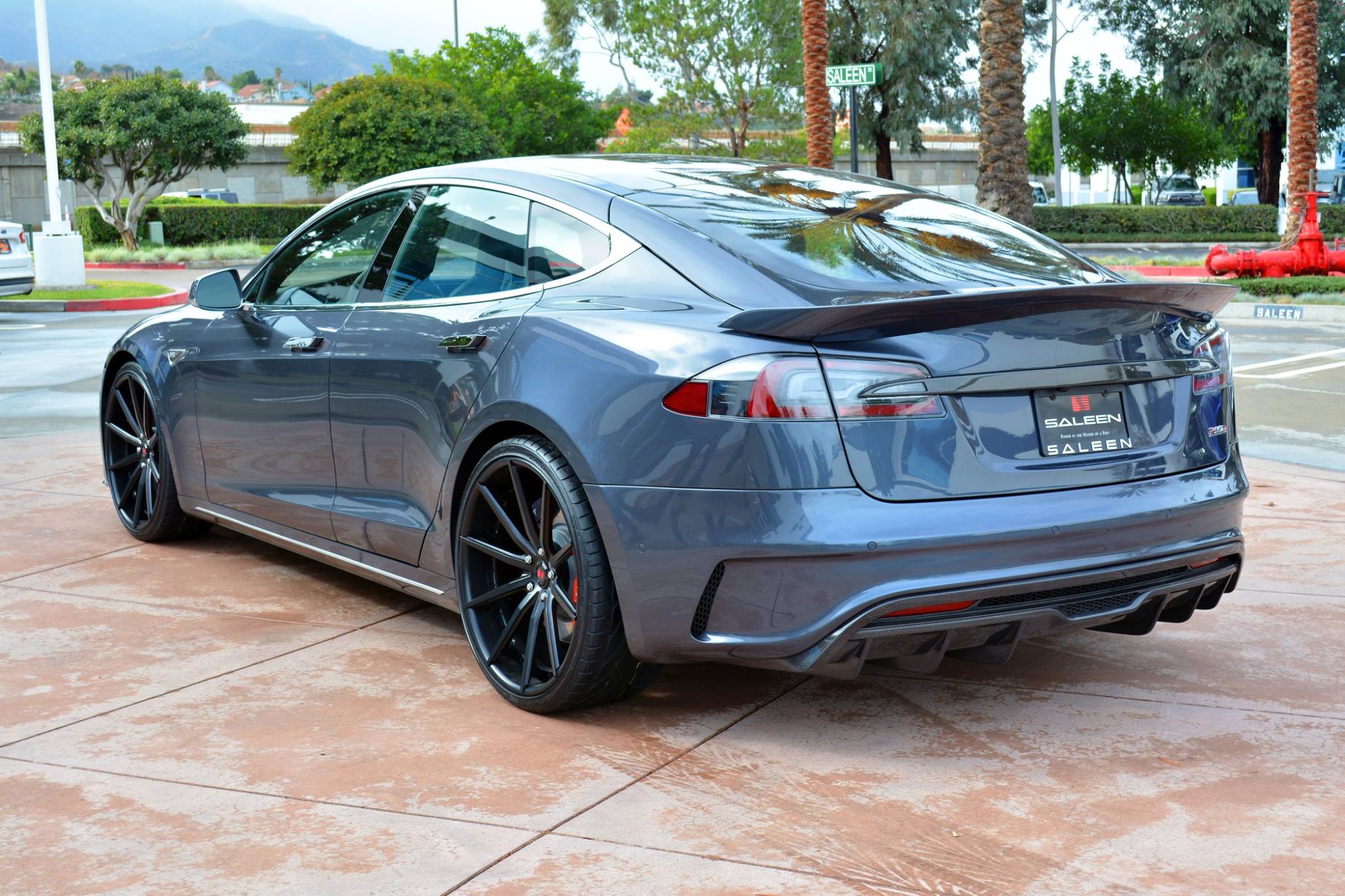
Click here to participate in the discussion.
[Source: Saleen Automotive]
From our friends at Saleen Automotive.
The Saleen GTX. A sophisticated 691 hp, AWD torque monster.

Click here to participate in the discussion.
[Source: Saleen Automotive]
From our friends at Saleen Automotive.

Merry Christmas from everyone at Saleen
Santa decided to give his reindeer a break this year. He should be able to go fast enough in this baby to make it to all the houses he needs to visit.
Click here to participate in the discussion.
[Source: Saleen Automotive]
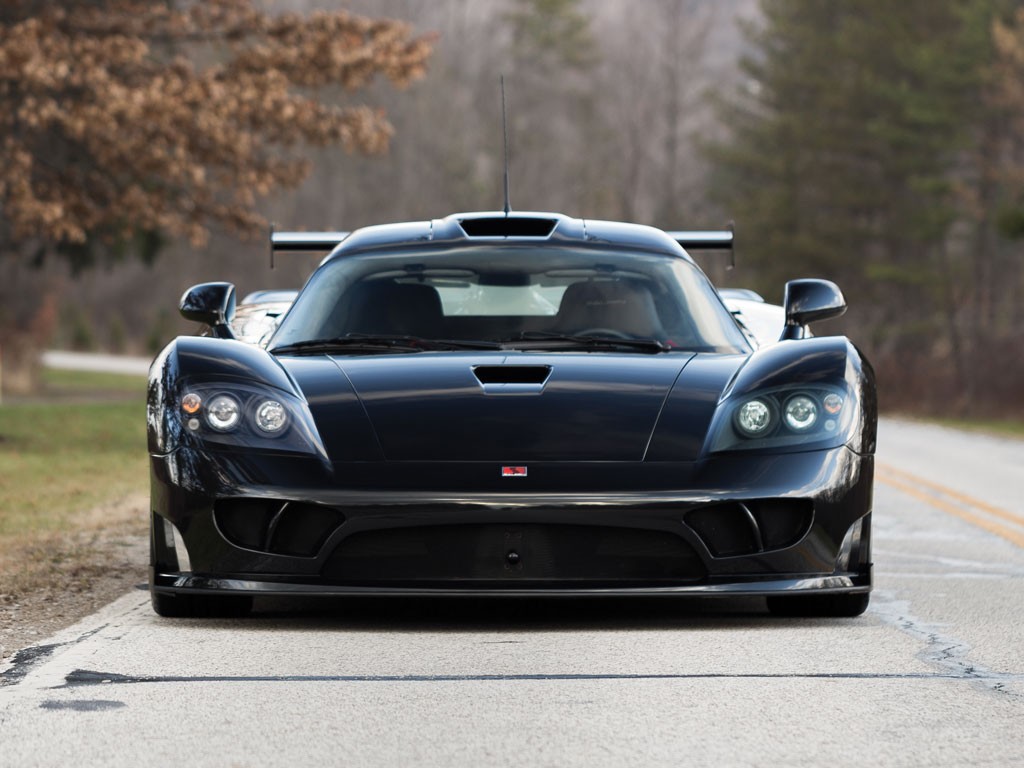
2005 Saleen S7 Twin Turbo ‘Competition Package’
Chassis no. 1S9SB181X5S000046
Serial no. S7-05-046
www.rmauctions.com
850 bhp, 427 cu. in. DOHC aluminum V-8 with twin Garrett turbochargers, six-speed manual transaxle, four-wheel fully adjustable independent suspension, and four-wheel ventilated Brembo disc brakes. Wheelbase: 106.2 in.
While Saleen had a very well-respected reputation for tuning Mustangs, the company had never ventured out on its own to build a car of its own design until the S7. Boasting a completely unique chassis, the S7 was developed for racing, and the road-going examples were constructed with homologation in mind. Fitted with svelte carbon-fiber bodywork and a mid-mounted 427–cubic inch V-8 engine, it could sprint from 0–60 mph in just 3.3 seconds and would accelerate onward toward an estimated top speed of 220 mph.
In 2005, Saleen took the S7 one step further and introduced the S7 Twin Turbo, adding even more horsepower, torque, and speed to one of the fastest street-legal cars that money could buy, thanks to a pair of Garrett turbochargers. Horsepower was raised to 750, and the car was given different front and rear fenders along with a slightly different aerodynamic package. Thanks to these changes, the car’s 0–60 mph time was decreased to 2.8 seconds, and top speed was quoted as a mind-boggling 248 mph.
Produced in January of 2005, this particular S7 Twin Turbo was finished in Black Metallic paint with a matching black interior and was outfitted with polished wheels and a GPS navigation system. It remained with its first owner until 2012, when it was sold to its second owner, in whose care it resided in a collection of modern supercars.
Under the stewardship of its first owner, the car had been returned to Saleen and upgraded with the desirable Competition Package. Horsepower was yet again raised to 850, and the car was fitted with revised front and rear diffusers, an upgraded suspension, and a massive rear wing to help manage the car’s power and performance.
The car is said to be in virtually as-new condition and an absolute joy to drive. Accompanying it is an S7 owner’s manual and a piece of S7-branded luggage. Furthermore, the car is documented by a copy of its original window sticker and a Letter of Authenticity from Saleen, confirming that this particular car is the only S7 Twin Turbo with these exact colors and options.
One of the most compelling American automobiles built thus far into the 21st century, the Saleen S7 proved that Saleen was capable of much more than building hot-rodded Mustangs and could truly play with the big boys on the world stage. Not only did the S7 make a big impact on the street, but it brought Saleen great success in racing with class wins at both the 12 Hours of Sebring and 24 Hours of Le Mans. The only S7 Twin Turbo built to this particular configuration and believed to be the lowest mileage S7 Twin Turbo in existence, it goes without saying that this is truly a spectacular automobile in all regards. For the individual with an unquenchable taste for horsepower, it would be difficult to make a better choice.
Click here to participate in the discussion.
[Source: RM Auctions]
THE ALL-AMERICAN SALEEN S7 SUPERCAR: One of only four naturally aspirated ultra-rare S7s with Saleen’s Competition package offered at Scottsdale
November 16, 2015
Posted by Barrett-Jackson
Written by independent automotive journalist Donald Farr
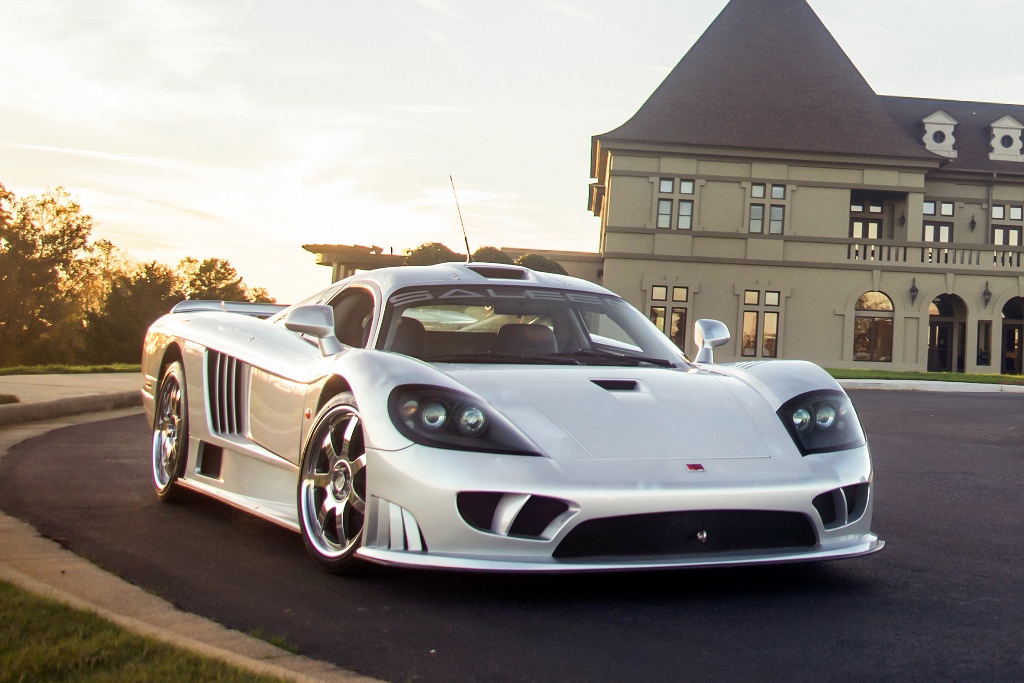
Like Carroll Shelby 20 years before him, Steve Saleen funded his desire to race by taking existing Ford products like the Mustang and modifying them into high-performance street vehicles, then selling through Ford dealers. The Saleen Mustang, introduced in 1984, brought Saleen Autosport to prominence in a time when the 5.0-liter HO Mustang reined supreme as one of America’s most popular performance cars. Saleen stamped his competition credentials in 1987 when his Saleen Mustang race team won the SCCA’s Showroom Stock Escort Endurance series championship, followed by SCCA World Challenge championships ‒ in Saleen Mustangs campaigned by the Saleen/Allen “RRR” Speedlab Team with comedian Tim Allen ‒ in 1996, 1997 and 1998.
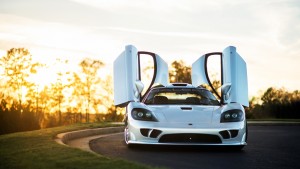
By the end of the millennium, Steve Saleen had collected an impressive number of “checkmarks” on his personal bucket list: Create a car company, establish Saleen as a premier brand in the American performance market, win national racing championships, and race at Indy and LeMans. But also like Shelby, Saleen wanted to build his own supercar, one created entirely from a blank sheet of paper and not from an existing platform. Shelby did it in 1999 with his Series One. In 2000, Saleen Automotive introduced the S7.
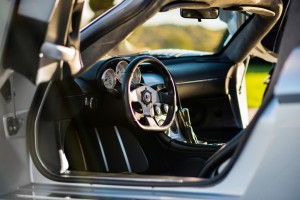
Unveiled on August 19, 2000, at the Monterey Historic Races at Laguna Seca Raceway, the Saleen S7 press release revealed Saleen’s goal for his new supercar: “The S7 is designed to compete with the fastest, quickest, best handling, most luxurious grand touring cars in the world while providing a distinctly American driving experience for the fortunate few who will own one. The S7 was conceived to combine the performance of a track-only race car with the driving pleasure of a road car.”
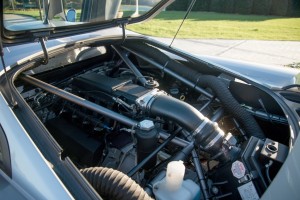
Saleen Automotive enlisted Phil Frank for body and interior design, Billy Tally for engine development, Ray Mallock for engineering and Hidden Creek Industries for resources and initial funding. Essentially, the S7 was designed around Tally’s engine, a 7.0-liter version of Ford’s 351 Windsor small block with high-tech components – including aluminum block and cylinder heads, stainless-steel valves and titanium retainers – to develop 550 horsepower without supercharging or turbocharging. To reduce the powerplant’s package size for use in the S7, Saleen designed and created a new Front Engine Accessory Drive system.
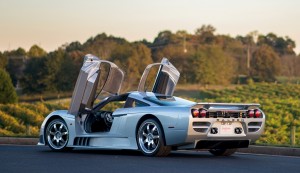
With the engine mounted mid-ship as with any respectable supercar, the S7’s hand-fabricated tubular space frame with honey composite reinforcement mounted fully independent suspension components developed in conjunction with England’s Ray Mallock Ltd. Extensive wind-tunnel testing helped shape the S7’s long, sleek, shark-like body, one of the first to use carbon-fiber panels and “full tray” body sculpting underneath. Longtime Saleen design consultant Phil Frank personalized the S7’s appearance with signature Saleen elements like the functional gill-like ducting, split-channel air flow through the car, advanced side skirt design and integrated full-body wing.
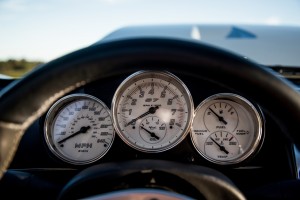
Climbing over the wide sills through the scissors-opening doors, the driver was greeted by a snug, asymmetrical interior with the driver’s seat shifted toward the center of the car. Leather and suede surfaces enhanced the S7’s image as a touring car, along with air conditioning, tilt/telescoping steering column, power windows, adjustable pedals and AM/FM/CD stereo. Missing was a rearview mirror; instead, the S7 utilized a remote video camera.
Saleen claimed a top speed of 220 mph with 0-60 in less than four seconds.
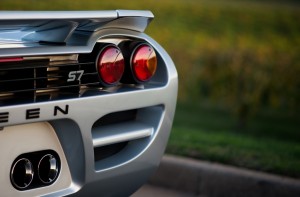
In 2003, an S7 starred as “God’s” personal car in the movie “Bruce Almighty,” starring Jim Carrey and Morgan Freeman. In 2005, Saleen upgraded to the S7 Twin Turbo with 750 horsepower. The Hollywood exposure and high horsepower may have helped the supercar achieve superstar status. The car initially sold for $375,000, but ballooned to nearly $600,000 for the Twin Turbo. Although production eventually extended over six model years, it was limited to only 78 very special cars, including 15 R models.
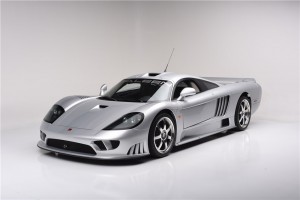
A spectacular 2003 Saleen S7 is being offered at the 45th Anniversary Barrett-Jackson Scottsdale Auction. One of only four naturally-aspirated S7s with Saleen’s Competition package, this beauty includes a $75,000 option that added a higher-performance camshaft, upgraded intake and exhaust, and a reprogrammed ECU. This particular Saleen S7, VIN #1140, was also equipped from the factory with optional chrome wheels, remote door openings, and factory-upgraded touchscreen sound system. Personally signed by Steve Saleen, this silver S7 has covered a mere 9,100 actual miles.
– Written by independent automotive journalist Donald Farr
Click here to participate in the discussion.
Price: $16,995.00
VIN: 1FABP41E7HF167993
Vehicle Title: Clear
Year: 1987
Make: Ford
Model: Mustang
Body Type: Hatchback
Number of Cylinders: 8
Engine: 5.0L 302Cu. In. V8 GAS OHV Naturally Aspirated
Fuel Type: Gasoline
Transmission: Manual 5 Speed
Exterior Color: Black with Silver Stripes
Interior Color: Gray
Mileage: 33,616
For Sale By: Desert Autosport
eBay #: 252215774026
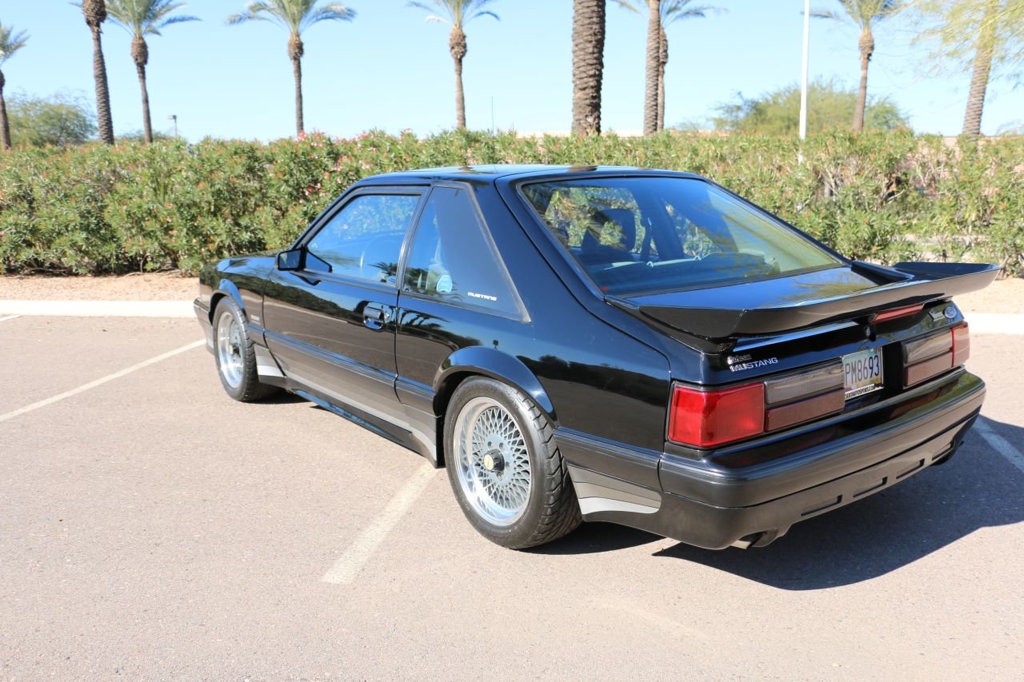
Vehicle Overview
1987 FORD MUSTANG SALEEN, 33K MILES, 5.0L, UNTOUCHED STOCK ORIGINAL, VERY CLEAN, 5SPD
Up for sale is my 1987 Ford Mustang Saleen hatchback. No clone here, this is the real deal. It is car #45 of 278 Saleen Mustangs made in 1987. It has 33,000 original miles and has never been modified, wrecked or abused in any way, shape or form. I have had several Saleen’s over the years and it is the nicest one I have seen in a very long time. I searched long and hard to find this car and the only reason I am selling it is because I recently purchased a 1993 Cobra R and needed the parking space but still could not part with the Saleen and then 2 weeks ago I bought a 2000 Cobra R also so now the Saleen needs to find a new home.
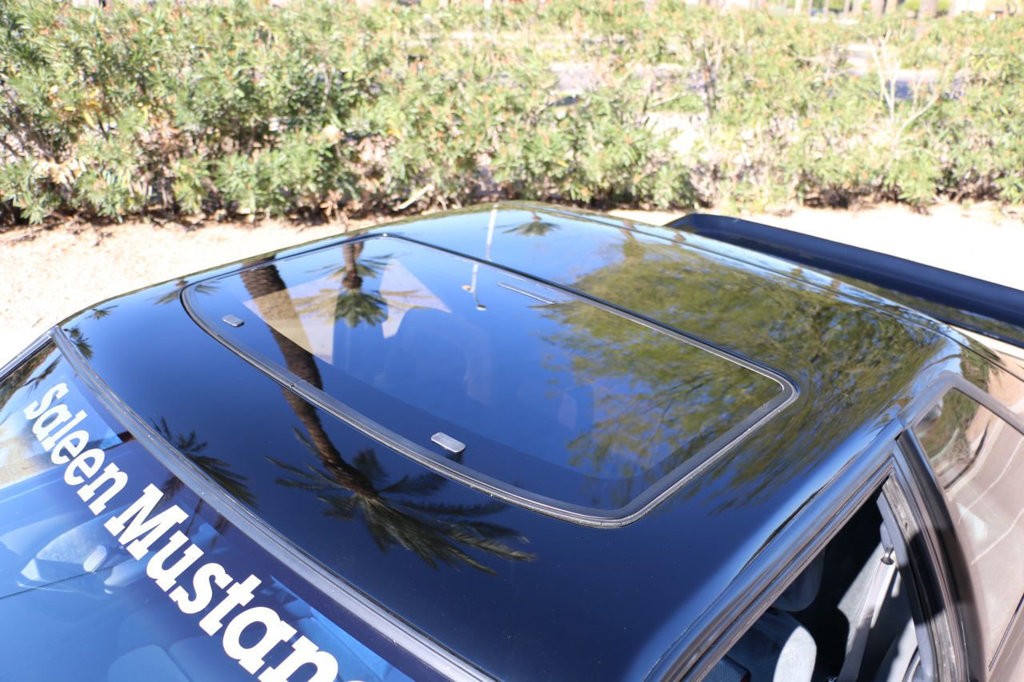
It is 1 of 2 Black Saleens built in 1987 with a factory sunroof which is a pretty rare option by itself. It is a 2 owner car from new and I have all the original Ford and Saleen paperwork including the Window sticker, books, records, manuals, Saleen sales brochures and more. The car was sold through Performance Autosport in 2002 with 5,000 miles on it to the second owner. I have several maintenance receipts from over the years and the majority of them were air conditioning repairs and yes it currently works and blows cold!!! The car even still has the original Escort radar detector that came as original equipment on all 1987 Saleen’s.
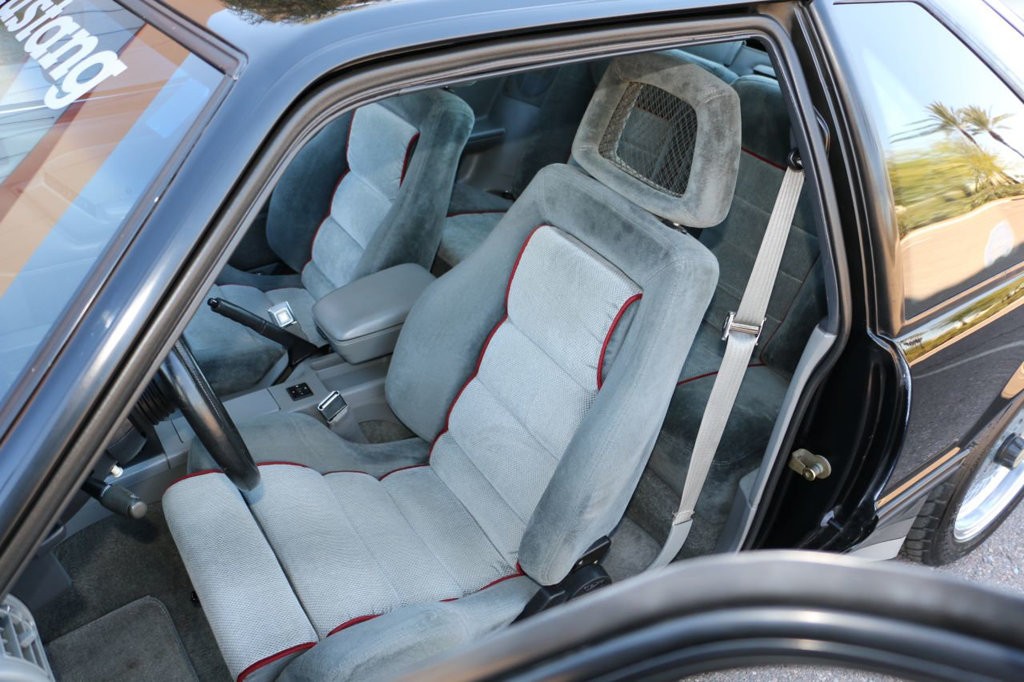
The paint and body are in excellent shape especially considering 1987 Ford black paint was terrible at best and it shines bright and shows great from every angle. The only blem worth mentioning on the whole car is the rear spoiler has some hairline cracks in various places which is very common. It could easy be fixed and made perfect but cars are only original once. The interior is like new and everything on the car works. Mechanically it is a please to drive and really is a flashback car. Everything is still tight and feels solid like only a low mileage car can. I have had lots of fox bodies since I was a kid and no matter how much time and money I spent on them you can never put them back together the same as when they left the factory.
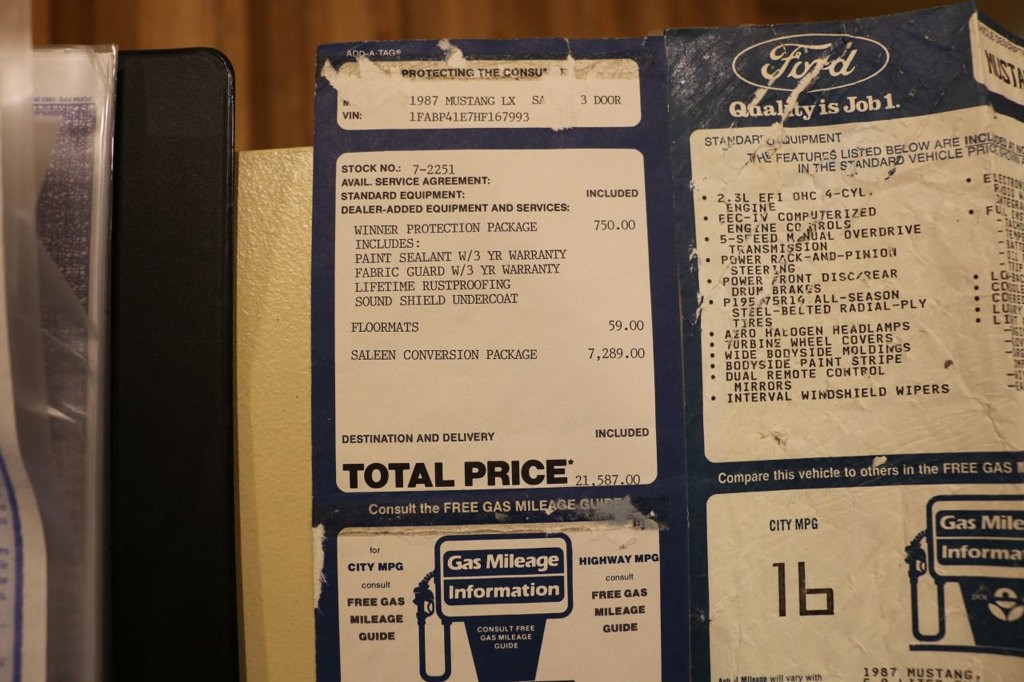
If you have any questions please do not email me, call me instead. It may take me several days to respond to an email but I am always available by phone. Please call Randy at 480-206-1701
Click here to participate in the discussion.
Raphael Orlove
Filed to: Aston Martin 12/15/15 12:19pm
The Saleen S7 is a mystifying car, a $375,000 American mid-engine supercar that sprung up out of nowhere in the year 2000. But what if it wasn’t exactly nowhere? Acting on a tip, I spent months trying to figure out the S7’s true origins. And I’m still not sure what to think.
The weirdest part about the Saleen S7 is not its carbon-fiber body, or its butterfly doors, or its V8 engine mounted behind the driver. It wasn’t its twin-turbo edition with a beyond-belief 1,000 horsepower, or its one blip on the pop culture radar with a starring role in that stupid Jim Carrey movie about a guy who became God and could get anything he wanted.
All that stuff makes sense, actually. The S7 was a car for someone who could get anything he wanted. And it came with a price tag to match.
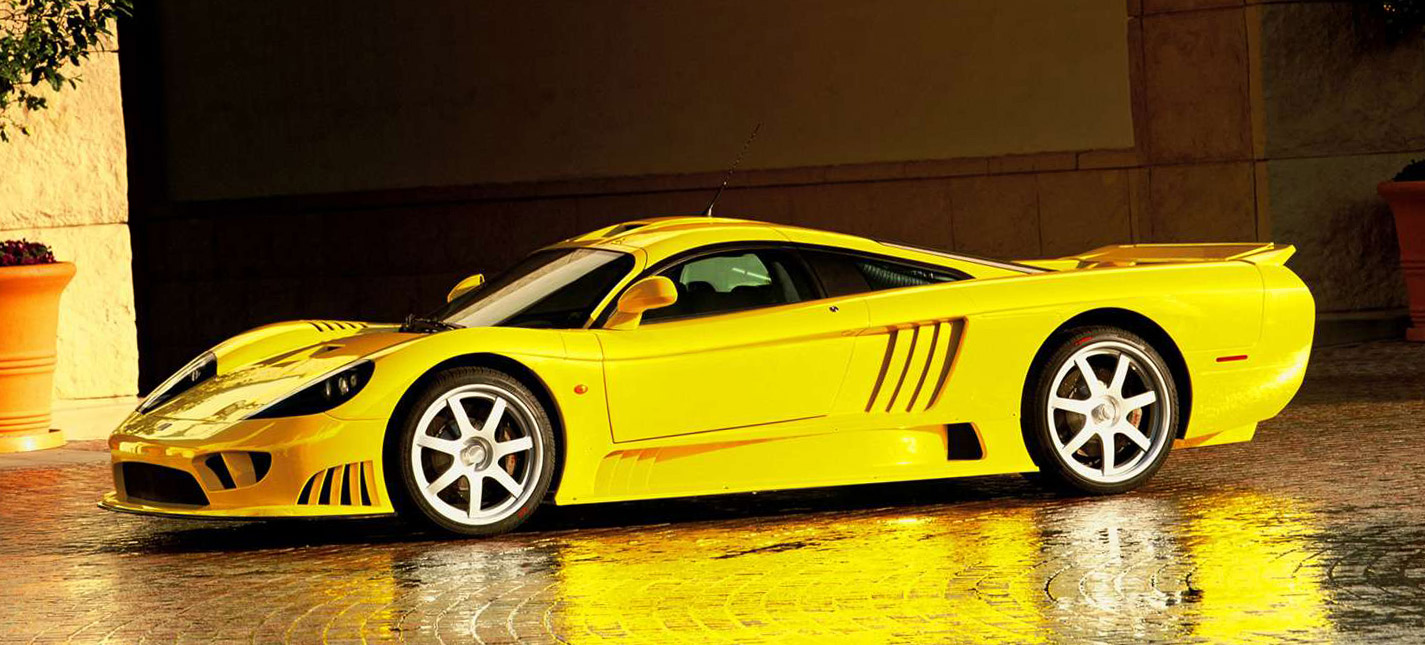
What’s weird is where the S7 came from—Saleen, a small Mustang tuning company based out of Southern California that had never sold a car like it before and never managed to make a successor since.
In the years before Saleen started selling the S7 (and in the years ever since they stopped), they busied themselves modifying and racing ordinary blue collar Fords. If anything, Saleen’s cars were mostly known for their numerous vents, lowered suspensions, and their propensity for being driven by people who consider a backwards baseball hat to be a wardrobe staple for all occasions.
It was incredible that they came up with a car of their own design, let alone one so exotic.
But after several months of research I can say that depending on who you ask, Saleen didn’t come up with the car at all.
The question of where the Saleen S7 really came from began with a mysterious email tip Jalopnik received after my coworker Mike Ballaban posted about Saleen’s current financial situation being, well, less than clear and less than good.
The tip came from a source claiming to be in the Southern California aftermarket industry (remember, Saleen is based in SoCal.) This was not particularly extraordinary; Steve Saleen has involved himself in a number of lawsuits in recent years; plaintiffs claiming he screwed them out of a contract, a car, or a job are not hard to find.
So while this new email had some unkind things to say about Saleen’s business acumen, what really interested me its abrupt and outlandish conclusion, which was unlike anything I’d read before.
The tipster said we should investigate the origin of the Saleen S7. The S7 is one of my favorite cars, and this already caught my eye, but the tipster then boldly claimed to have heard that the S7 started out as a 1980s Group C sports car racer that never saw the light of day from, of all places, Aston Martin.
The Saleen S7 came from an old aborted Aston Martin race car. Let that swirl around your brain for a bit.
On so many levels, this claim seemed beyond belief: Group C was one of the most researched, revered periods in recent racing history. Group C cars simply did not disappear and then reappear decades later as a road car.
But the tipster went on, further claiming that famed Corvette tuner and race car builder Reeves Callaway had the chance to buy this potential Aston, but instead passed it along to Steve Saleen, who then supposedly stole the design without payment.
Normally I would immediately ignore a claim saying that a famous supercar began life as a stolen, aborted Group C racer, but there are some parts of this story that make a lot of sense.
Well, sense isn’t the right word. I can say that are a lot of pieces that seem to fit.
Luckily for me, when we got this email, I had recently finished up researching a history of Aston Martin during the same period, so I was familiar with a few details of what was going on. But all I had were pieces, mixed up, unclear if they fit together.
The first piece was that Aston Martin did indeed have a Group C race car program. It started as a privateer effort that developed into a full factory car, the Aston Martin AMR-1. That’s where you have to start with this mystery.
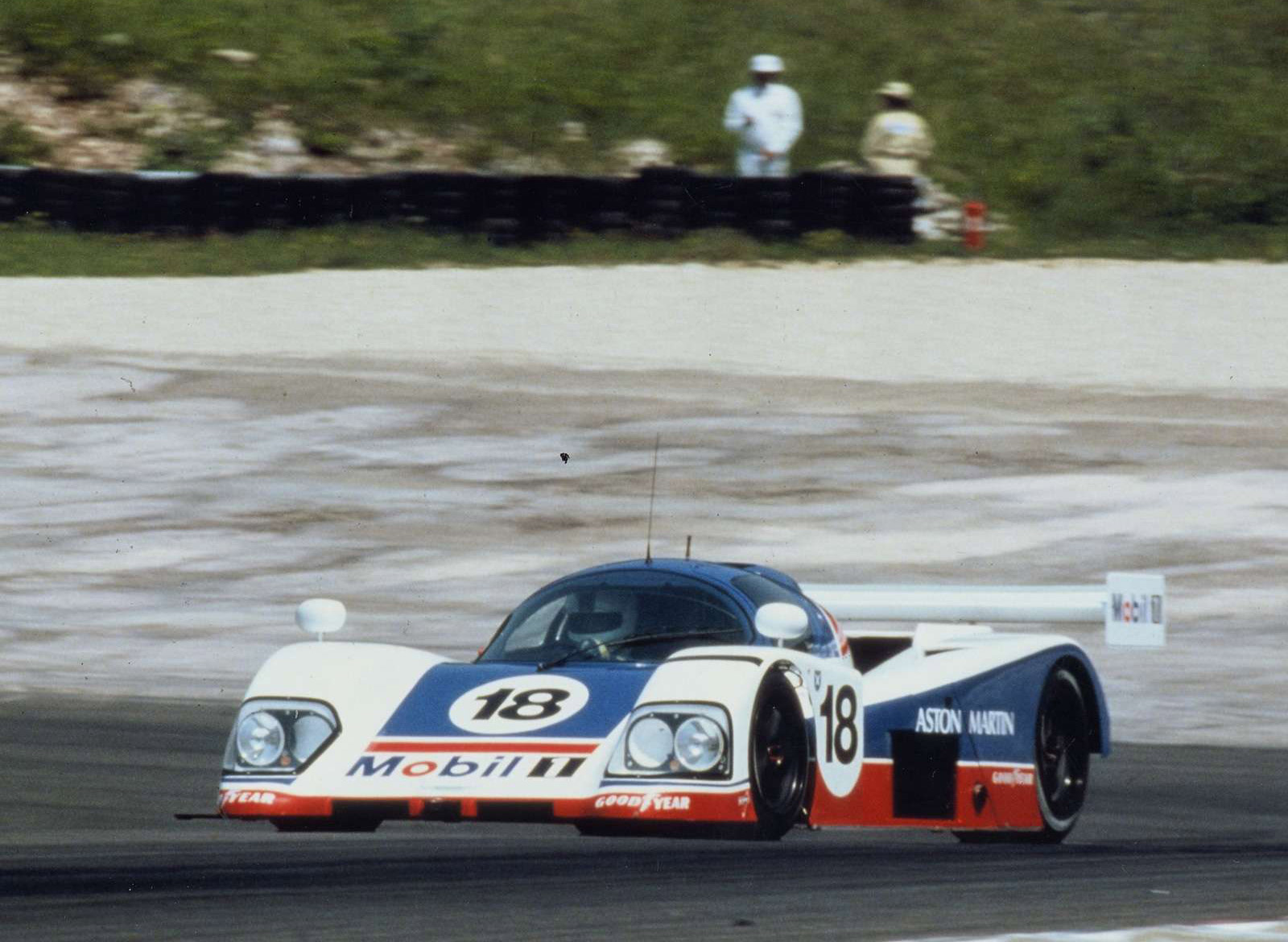
I love the AMR-1. The only toy car I’ve ever had was an AMR-1, and it’s one of the tragic stories of prototype racing’s glory years in the 1980s. The car was wonderfully designed, a fine carbon fiber chassis with a mid-mounted version of Aston’s long-lived V8 engine, initially worked up to 687 horsepower out of 6.0 liters, and eventually 721 out of 6.3.
It only ran in one season and it never won a race, but it did manage to complete the 1989 24 Hours of Le Mans. The Aston team technically ended the season ahead of better-established Toyota in the manufacturer standings.
It’s astonishing the AMR-1 finished as well as it did, as drivers complained of “severe porpoising” at high speed due to the car’s massive ground effect downforce loads. With some tuning and development, Aston looked set to have a strong finish or victory in 1990. The team even had plans for an AMR-2 with redesigned aerodynamics and a more powerful engine.
But Ford killed the program. The company had recently gone from minority shareholders to outright owners of Aston Martin, but they also owned Jaguar. While Aston did alright in its debut season, Jaguar was way ahead.
Jag had won the 1988 24 Hours of Le Mans and it was on its way to more successful years. What complicated things even more for Aston was that in 1989, the organizers of the 24 Hours of Le Mans announced that they were switching to 3.5-liter Formula One engines for 1991. While Ford did have access to a Cosworth 3.5-liter Formula One V8, Ford only blessed one team with it. That one team wasn’t Aston Martin.
Either Ford couldn’t afford to fund two top-flight race programs, or Ford didn’t want two brands and teams dueling for the same spot. Either way, Jag got the engine and Aston didn’t. Aston’s race program died and Jaguar’s lived on.
Jaguar ended up winning Le Mans in 1990, though it later struggled for years in F1 and Le Mans with the Cosworth engine, which turned out to be a disappointment.
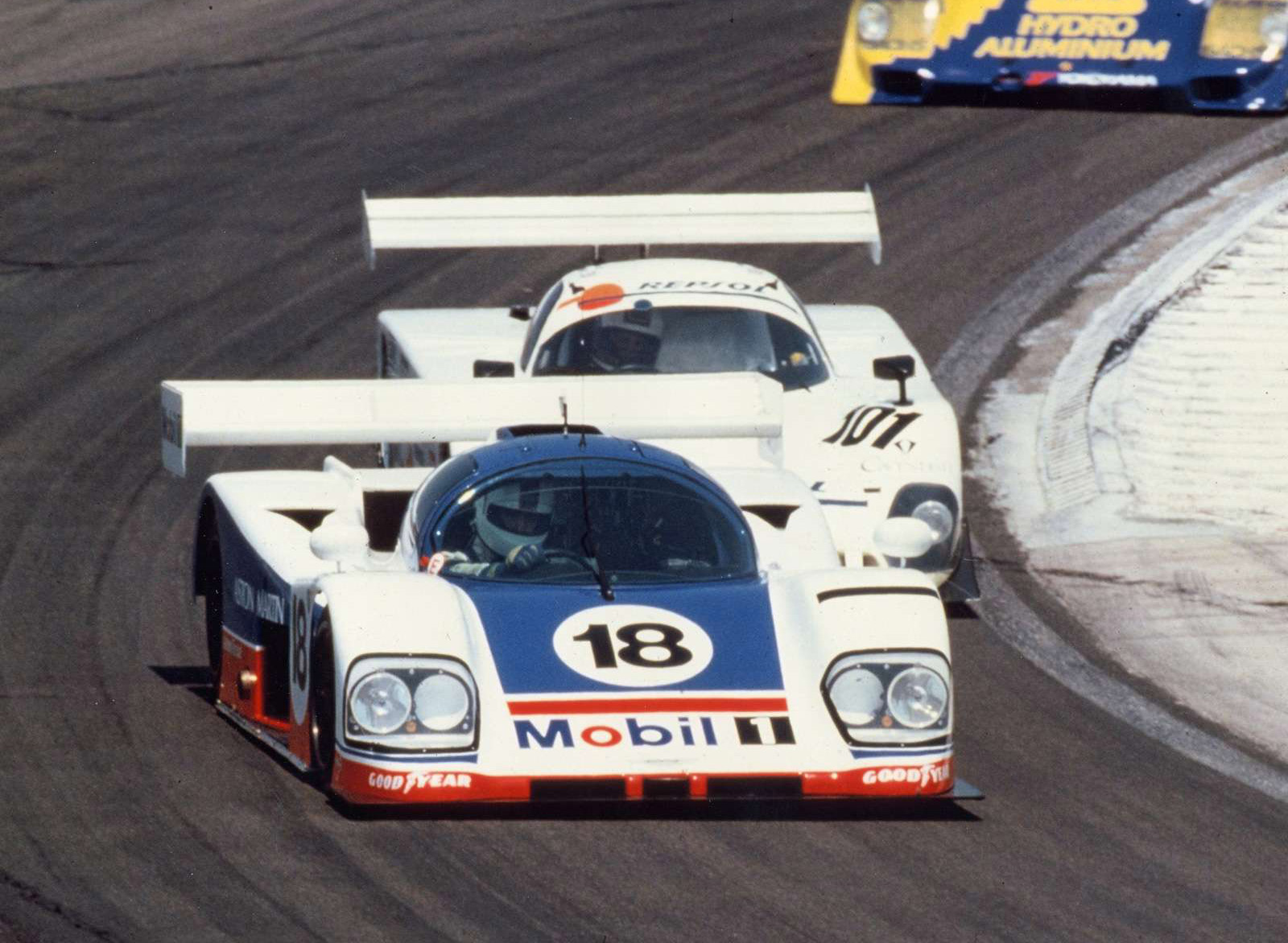
Alain de Cadenet mourned the loss of Aston’s Group C program on his classic show Victory By Design:
This car got mothballed, and in my opinion that is a great, great shame. Because I have driven a lot of these Group C cars, and this is as good as any of them. It had all the qualities for research and development to make it into a car that I’m quite certain could have won Le Mans, had it had the money, the backing to continue.
Amazingly, not only did the AMR-1 and AMR-2 show promise for 1990, but Aston was actually planning on an entirely new chassis called the AMR-3, which never materialized. One of the greatest designers of the time, Tony Southgate, was expected to pen the AMR-3.
That’s our cliffhanger. Now let me explain where the Callaway and Saleen connections come in. This is all true, and doesn’t deal with the rumor. Not yet.
Our first established, factual tie-in is the engine. Aston Martin’s V8 was two decades old by 1989, and the company had to get outside help to turn it into a credible race motor.
Aston called up Cosworth, which is probably one of the best in the business, to do the job of designing the race motor, as well as development of a road-legal version for its upcoming Virage sports car. But Aston didn’t have a lot of money back then, and Cosworth was too expensive. So Aston went to the American engine tuning company Callaway, which built bonkers twin-turbo Corvettes and the like.
Callaway did the job for the right price, and the new Virage and the AMR-1’s engine came from the American company. Now this is where things get even more connected.
Aston Martin in the 1980s was an extremely backwards old company, staffed by grey-haired old men beating panels into shape by hand. Back then, Aston made their styling bucks fully sized out of mahogany, and assembled their cars in a facility more like a shed than a factory. How did a company like that end up producing a capable and extremely modern mid-engined top-flight prototype car?
Well, they worked with Ray Mallock Limited, or RML. Ray Mallock was a racecar builder, and had actually ran and competed in a private Aston Martin-powered Group C car in the mid ‘80s.
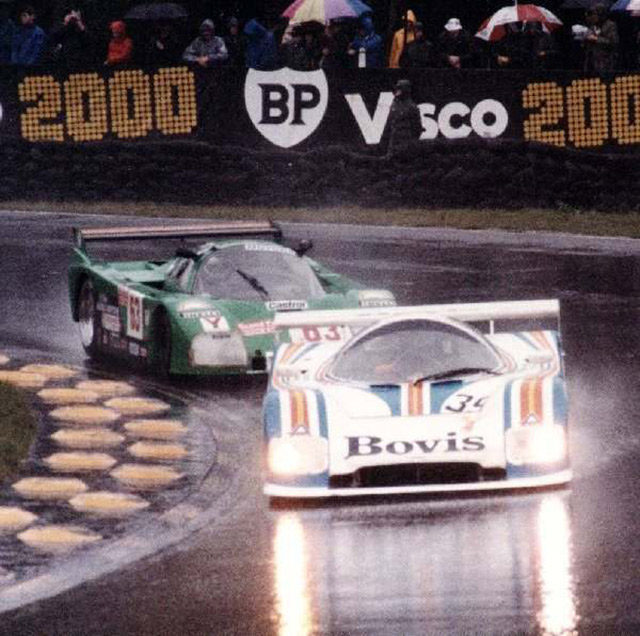
It was only natural that he and his company were the ones who would grow their team into a full factory program. Well, all that racing, and the fact that by the late ‘80s, the guy who sponsored the old RML cars had become chairman of Aston Martin.
There’s a reason why I bring up RML, and its role as the company to design a modern mid-engine car for an old-school company: RML was the company that engineered the Saleen S7.
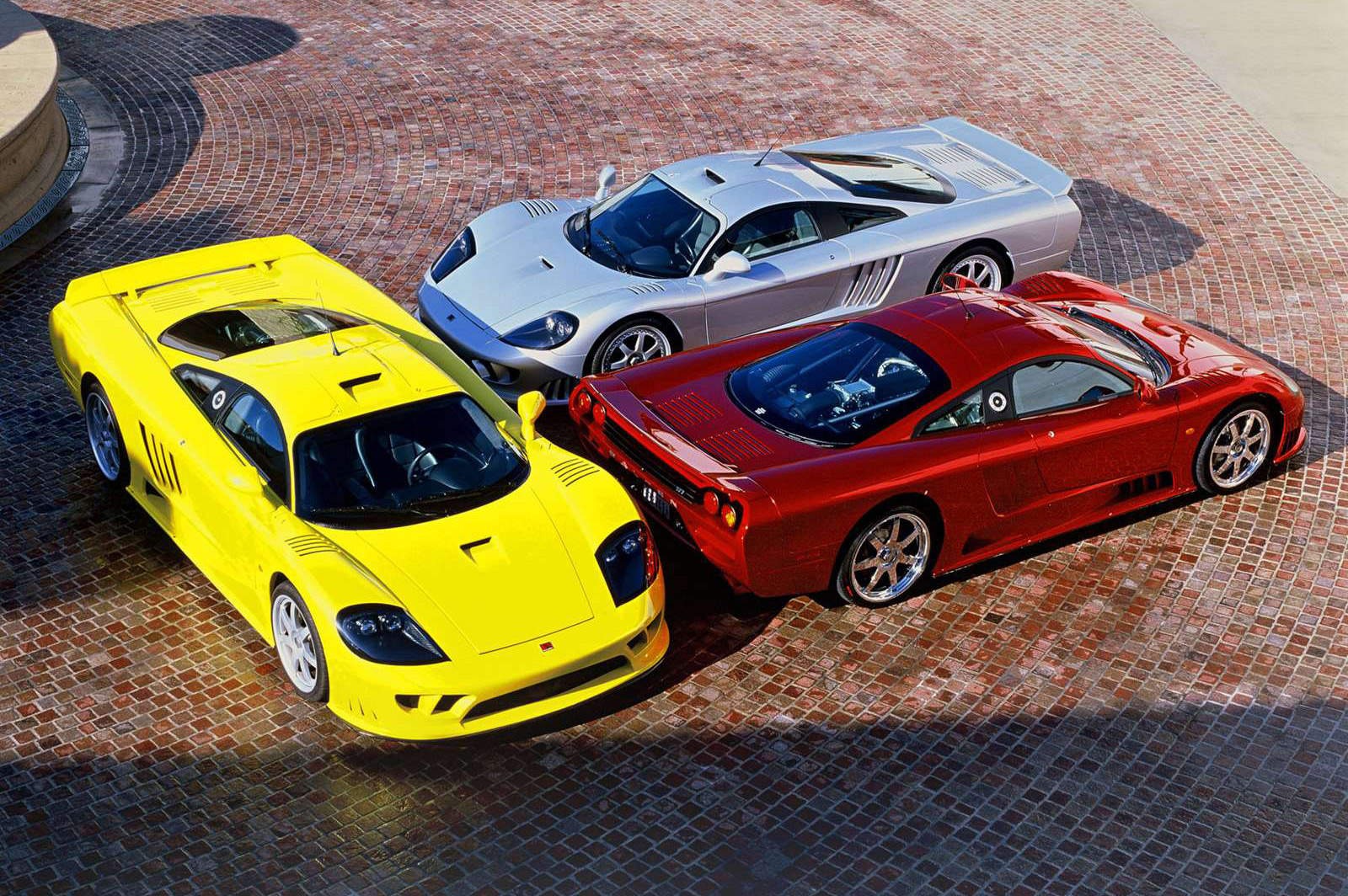
The chassis, suspension, aerodynamics, and just about everything else short of the badges and the engine for the Saleen S7 came from RML. Car and Driver reported on this when discussion Saleen’s role in the troubled development of the Ford GT, and also in its review of the Saleen S7 when it came out. You can read the whole thing right here.
Here’s the relevant bit from writer Aaron Robinson:
For chassis and suspension work, Saleen turned to England’s Ray Mallock, Ltd. The Mallock name is synonymous with a series of front-engined club racers Arthur Mallock built in the late 1960s. In addition to supplying engineering services to fledgling carmakers, Mallock’s son, Ray, now fields factory rally and touring-car teams for Nissan, Opel, and Vauxhall.
Mallock developed the S7’s bird cage of painted steel tubes with aluminum honeycomb sheets that are riveted on for reinforcement. They form the floor, the fire wall, and the front crash box. Mallock also devised the suspension of steel tubes that are the independent upper and lower control arms. They bolt onto the chassis through aluminum billet plates that are designed to shear on impact to isolate the frame from crash energy. At the other end, the control arms grasp aluminum hub carriers. All four discs — 15-inch front, 14-inch rear — are pinched by unboosted six-pot aluminum Brembo calipers.
Mallock took scale models of the S7 to Scotland and the University of Glasgow’s wind tunnel to work on underbody aerodynamics, operating on the theory that “what goes on underneath is more important than what goes on up top.” He insists the S7’s sculpted undertray helps generate downforce equal to the car’s weight of 2750 pounds at 160 mph. That means it could run across a ceiling at that speed. Fortunately for him, no insurance company will underwrite a car magazine willing to test that assertion.
So the pushrod engine was Saleen’s and the body styling was done by Jalopnik reader and designer Phil Frank, but the rest was RML. RML says as much on their website.
Those are all the pieces of this story. Now let’s put them together.
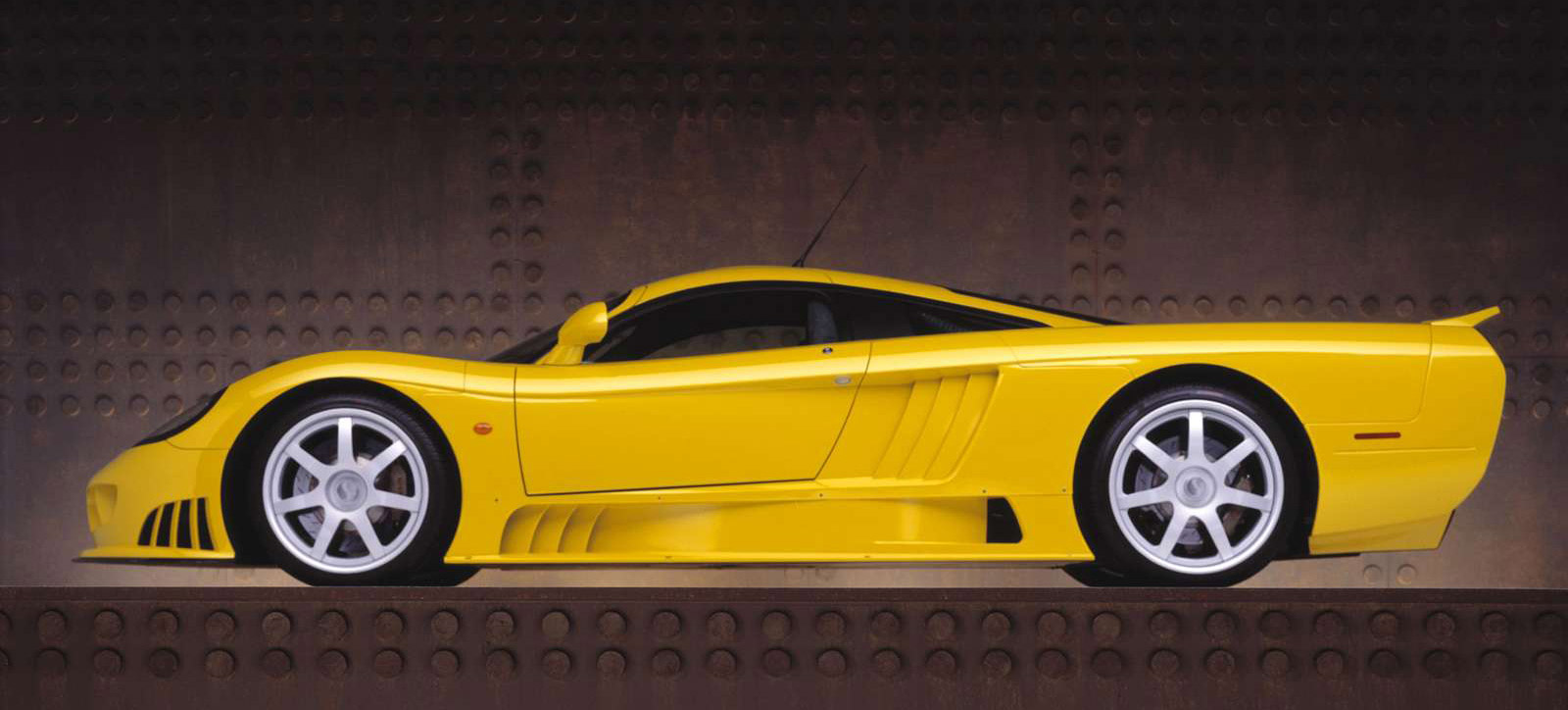
The assertion from our anonymous email is that the Saleen S7 is an aborted Aston Martin Group C car, passed up by Callaway and stolen by Saleen.
As you’ll note, these pieces seem to align, but they don’t come all the way together. It’s possible for this story to be true, but there’s no supporting evidence whatsoever.
Particularly troubling for the “stolen plans” theory is that all of Aston’s Group C cars were built on carbon fiber and kevlar monocoques made by ex-F1 designers. The Saleen S7 is an old school tube-frame beast.
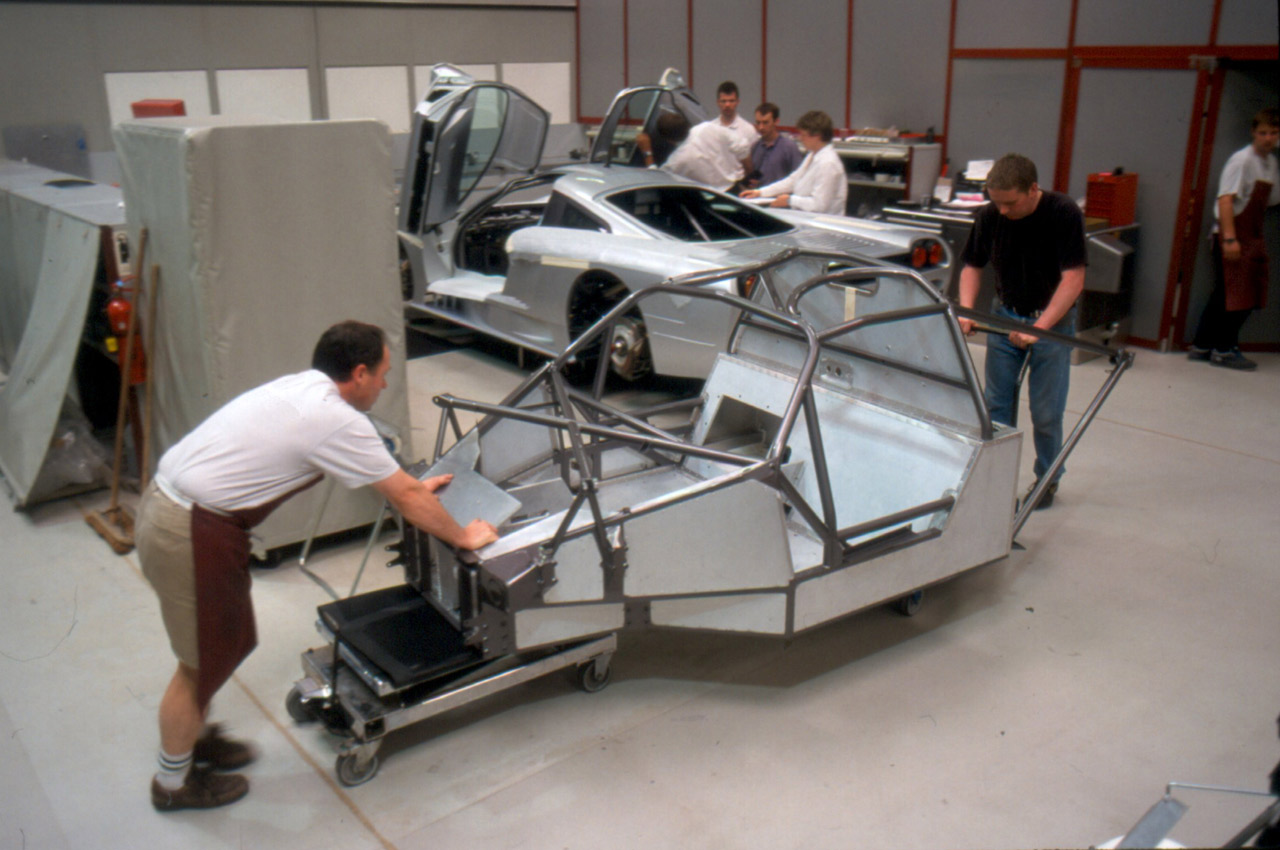
There’s no way a car like the Saleen S7 could have competed as a prototype at Le Mans in the early 1990s, as our tipster seemed to imply in that original email.
But there are lots of holes in our proof against this emailed theory, just as there are holes in its support as well. Maybe there was some kind of aborted Aston race program developed by RML that did end up becoming the Saleen S7, only not in the way that the email described.
The S7 may not be a dead Group C car, but it does look like a later GT1 car. Aston Martin ended up turning the DB9 into a class-winning GT1 car in the 2000s. Saleen raced in the same category, again with RML design with the S7R. Could the S7 be tied to some other aborted Aston-powered 1990s or 2000s program we’re missing?
We might not be looking at exactly a zombie Group C car for the road, but there may be some truth in this email, some kind of deal done behind closed doors.
With these thoughts in mind, I called all of the main characters in this story for comment.
And this is where things only became more muddled.
The first call went to the original tipster, who fleshed out this unusual claim with a few more details.
The tipster said that the plans for the aborted Aston allegedly made their way to Saleen by way of Reeves Callaway’s wife, Sue Callaway. She was editing MotorTrend at the time, and on a test drive of a Saleen Mustang with Steve Saleen himself, they ended up at Callaway’s house. Reeves Callaway was apparently looking over the plans for the Aston given to him by Ray Mallock.
Since Reeves was busy with the development of his own race car at the time, the mid ‘90s C7, he passed on the project, offered it to Steve, and Saleen bought it up.
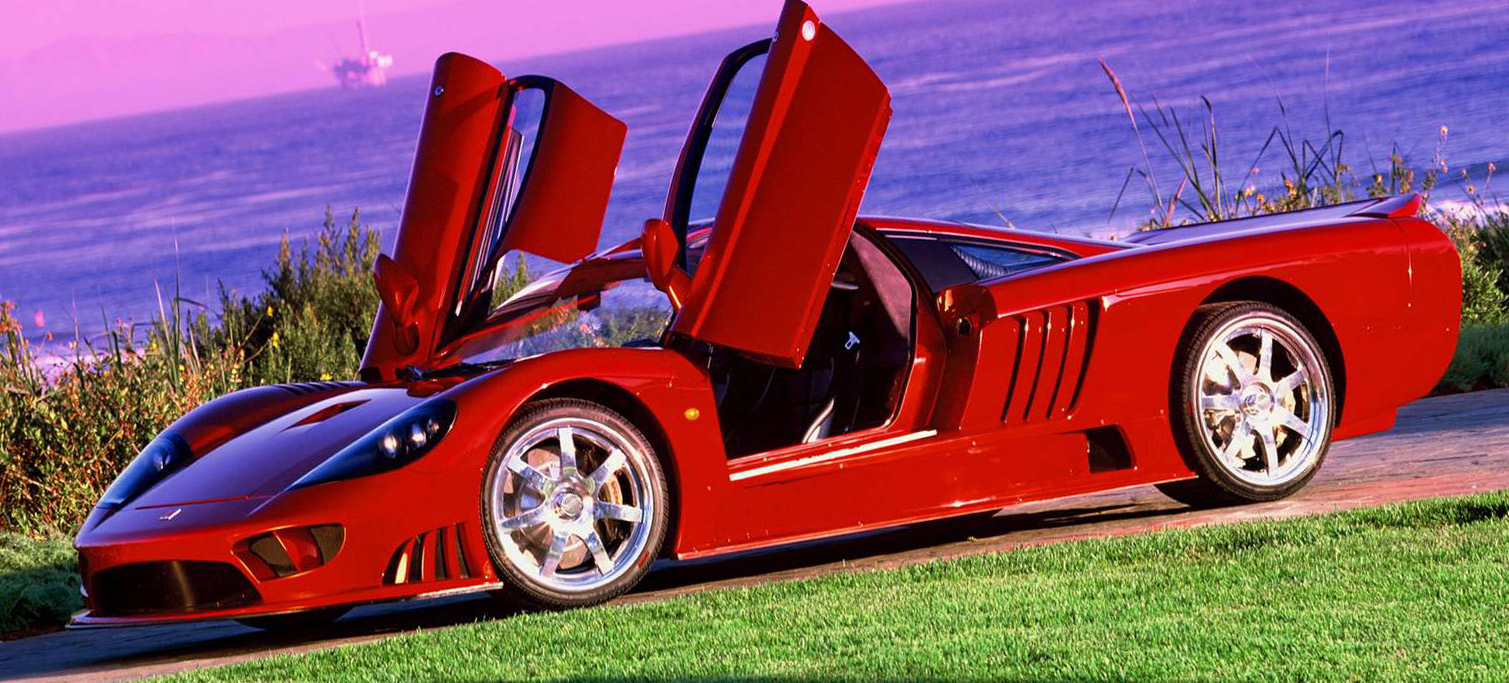
The idea of the Saleen S7 starting its life over a chance lunch meeting in a hillside SoCal home was too much for me to believe on its own. Not sure how to handle this allegation, I called Reeves Callaway.
“There’s really no mystery,” he told me. “I can give you the absolute correct and verifiable view.”
I would later find out that I was not able to verify his views, and they were far from absolute.
At first, Reeves went over what I already knew, detailing exactly how the Aston Martin Group C program grew from a privateer program to a factory effort. Callaway was involved early on, and he was familiar with all of the key players.
There was nothing that you can’t find in this book, at least, until he started talking about what he claimed happened to Aston’s proposed replacement for the AMR-1.
We saw the handwriting on the wall that said the Group C regulations would change for 89, Ray [Mallock] and Max [Boxstrom, ex-F1 engineer and man behind the AMR-1 design -ed.] drew a new car, and proposed it to Aston. Aston was just about to sign off on the program, and the company was sold out of Peter [Livanos]’s hands into Ford’s hands. Ford consolidated the racing into one brand, which was Jaguar, so Aston was out to pasture.
But the design of the car existed, and Ray was searching for a customer.
Callaway went on to say that Mallock asked him if he knew anyone interested in taking on the development of this orphaned design, and Callaway claimed that he introduced Ray to Steve Saleen.
I don’t remember whether Ray and I went to Laguna Seca together or not, but there was some opportunity to whisper in Steve’s ear, that there was this program, there was a deal to be done.
Callaway then went on to note that the Group C was big money in those days, and neither he nor Ray had the resources to carry on Aston’s program alone, which is why they shopped it to someone else. Maybe Reeves regretted the decision, noting: “Several years later, Ray would come back to me and say I would curse the day you introduced me to this Saleen guy. Of course, because you don’t rid yourself of that reputation.”
Reeves concluded, “Steve just bought the whole [Aston Martin] package, as designed, and had Ray build the first cars.”
My head spun when I heard that. The Aston Martin theory made no sense, and there seemed like no way in hell that Reeves Callaway, one of the people involved in the project, would back it up. And there was still the unaccounted-for hole in time in what Reeves was telling me.
So I asked how exactly the timeline went from 1989, when the Group C program ended, to 1999, when Mallock started working on the S7. How could he account for those unexplained ten years in the middle of this story?
Reeves told me that these questions were best answered by Mallock himself, and he gave me Ray’s contact information.
“I think you’re on the right track,” Reeves told me. “Keep pressing for the truth here.”

So I called Ray Mallock, and he did indeed give me a very detailed timeline of both his work, and his company’s work through this period of time. But it completely shut down any possibility that the aborted Aston morphed into anything with a Saleen badge.
“There was no direct linkage between that car and the Saleen,” Ray explained not once, but twice for emphasis. “The RML linkage is the only thing, our engineers and technicians involved. There was no blueprint, IP, or concept carried over.”
From 1983 to 1990, Ray Mallock and his employees developed the race program that ultimately produced the AMR-1, starting in the lower C2 series, then gaining an Aston Martin engine, then getting full factory support in the top C1 class. RML had just moved out of their old headquarters in some agricultural buildings and into a new, clean industrial space for the first time when Aston lanced their Le Mans dreams. They just didn’t have the money to build a new engine, as Ray repeated.
The company was left with a highly qualified staff, but with no race program for them to work on. In the meantime, they built Ford GT40 replicas. Well, briefly. RML had time to build a mere six of them.
It wasn’t long before RML got back into the business of building contemporary Le Mans cars for Nissan. RML’s cars had no connection to the AMR-1, Ray noted, but they were so good that they were well on their way to claiming overall victory for Nissan in the 1990 24 Hours of Le Mans.
They were not only faster than the Jaguars that eventually took the win, RML’s Nissans used less fuel. (In fact, RML’s Nissans were so fast that one was the third fastest car at the 24 Hours of Le Mans in 2014.)
At five in the morning during the 1990 race, RML’s fuel tank split. It was a problem that Nissan’s European team had discovered during testing, but they had not shared their information with the RML working out of America. Ray did not sound particularly pleased about that point when I had him on the phone.
“I tried to persuade Nissan to return in ‘91,” Ray noted, “but that didn’t happen.”
RML then launched right into running factory team efforts in the revered glory years of the British Touring Car Championship. They first worked with Vauxhall, then switched over to Nissan for a three-year contract starting in ‘96. And they did well with it. RML-run Nissans won the BTCC in 1998 and 1999.
With these back-to-back wins, Nissan let the contract end. This was fine for Nissan, but once again RML was left with plenty of talented staff with nothing to do.
“They were looking for a project,” Ray remembered, “and they found Saleen.”
With so much available and clearly talented staff, RML did the work on the S7 immensely fast. The initial design work on the car was done in a month. They worked with Saleen to pick out the concept for the car, moving from Saleen’s initial idea of a front-engined layout to a mid-engined one. RML used Saleen’s styling staff and two-valve engine, but the rest was RML, according to Mallock himself.
It was this single focus from RML’s staff that had the Saleen S7 spring up out of nowhere. It was not any past work pulled from a dead AMR-2 or a conceived AMR-3.
Mallock’s timeline convinced me that there were no direct ties from any long-gone Le Mans program to the Saleen S7, but I needed to just make sure with the last person involved: Steve Saleen himself. So I gave the guy a call, and explained the whole rumor as told to me.
I nearly got the final conclusion I had hoped for.
But not quite.
“There’s not any truth to any of what you’re saying,” Steve said, after a weighty pause.
Steve was confused and a little bit offended by the Aston Martin rumor. It was clear he loved the car, that he saw it as a validation of all his work in the automotive business. The guy talked about the S7 like it was his baby, which makes sense, given how the mighty supercar bears his name.
According to Steve, the idea for the S7 came after Saleen had basically done all they could do with the Mustang. Their modified Mustangs swept the 1999 Grand-Am GTO team and driver’s championships, and claimed their fifth-straight manufacturers’ championship.
The Saleen Mustangs had been chopped and channeled, lengthened, with a new independent rear, center-mounted push/pull suspension, and even a new Saleen motor. It had “some basis of Ford,” Steve told me, “but it was really our own engine.”

He explained further. “During the course of that we had really pushed the envelope of what the Mustang was as far as it could be pushed,” he said. “If we were going to compete at a higher level, we would have to have a street car. We’d need a car that could compete against Corvette, Viper, all the other ones.
“When we took Mustangs in 1997 to Le Mans, we were parked next to the garage with the McLaren long tail GTRs. From an American standpoint we had an opportunity to do something even better,” he said.
And so that was the genesis of the S7, Steve told me. He went on to say that at Le Mans, staring at the best Europe could offer, he believed that an American small-block pushrod V8 could produce similar power as the more complex dual-overhead cam multi-cylinder engines used by those exotic European manufacturers. The trick was that the American pushrod engines were physically smaller. This gave Saleen a huge theoretical advantage in terms of how they packaged the car for aerodynamics, weight distribution, and center of gravity.
Using “American ingenuity,” Steve said, he could make a car even more agile than rival supercars from the exotic establishment.
And the principle worked. In 2004, the Saleen S7 race car (called the S7R) beat none other than Ferrari at Ferrari’s home track. Steve himself recounted how Ferrari flew in reporters and VIPs to the race held at Imola, in Italy, even entertaining them with an entire circus constructed by the track.
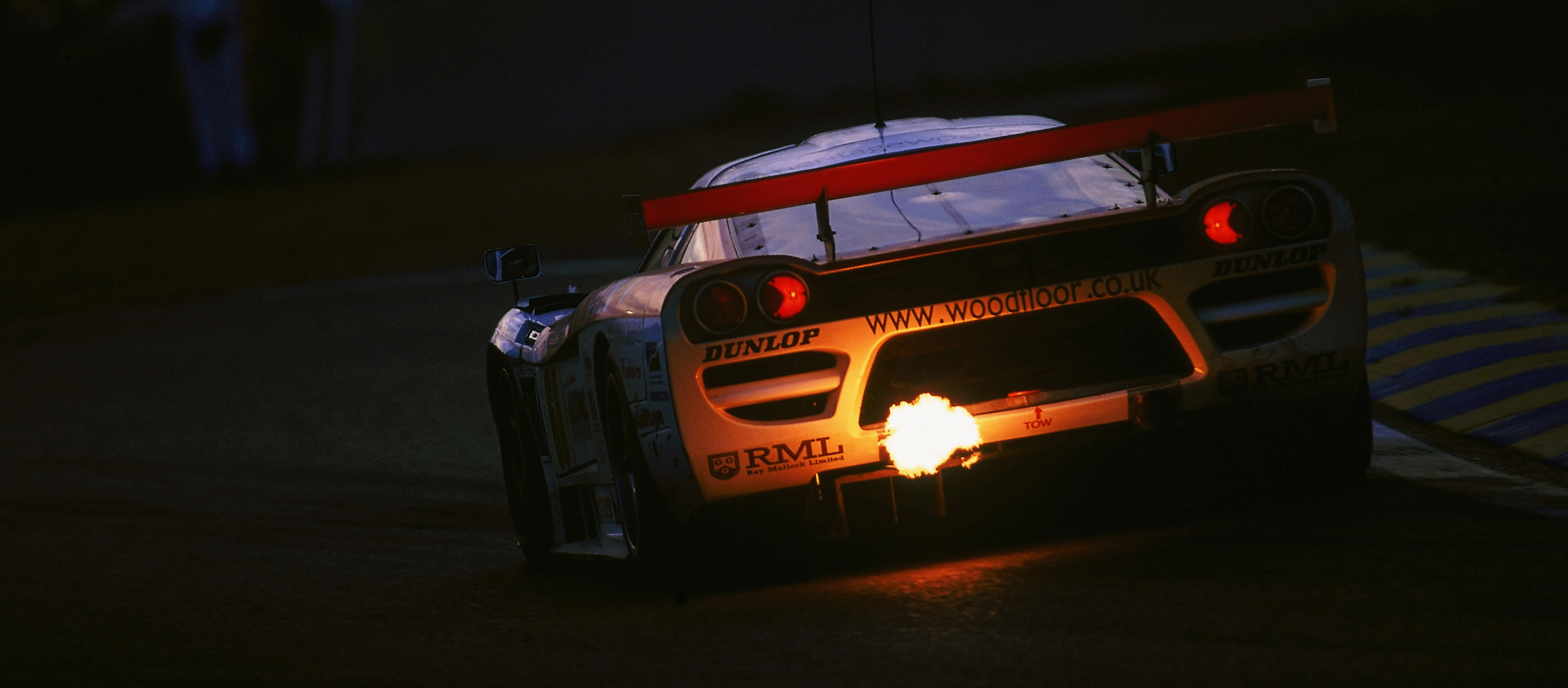
The S7R raced against two Maserati MC12s (which weren’t much more than thinly disguised Ferrari Enzos), three Ferrari 550s, and a pair of Lamborghini Murcielagos to round out the Italian supercar opposition.
And the Saleen won.
“We were no match for the Saleens today,” Ferrari’s then-CEO Luca de Montezemolo said at the time. I consider it one of the greatest upsets in auto racing history.
And while that’s a clear explanation of how Steve’s vision for the S7 worked out, it doesn’t account for how the car made it into production. But Steve had an answer for that. It’s one thing to simply modify an existing vehicle on sale; it’s another to get a new design to pass a country’s safety and emissions regulations necessary for sale.
Steve was happy to explain how Saleen, a tuner company, could get such a fully-formed car into production so easily.
“At the time most people did not understand, most people don’t understand today, as modifiers of the Mustang, we had to certify it,” he said, explaining that Saleen already had experience with America’s regulating bodies. Saleen’s tuned Mustangs had passed through the same government hurdles as the S7.
“We certified with NHTSA, with the EPA. So stepping up, instead of like Shelby stuffing a bigger engine into the AC with the Cobra, we had the capacity for meeting all the certification requirements for making our own car,” he said.
Everything up to this point in our phone call made sense. But then Steve started to run against the narrative I’d found going through previous reporting on the Saleen and talking with Ray Mallock.
Steve claimed that Ray Mallock did not do any design work on the car. Steve asserted, very clearly and plainly, that RML was only a “parts supplier.” According to Steve, Saleen only put out a bid to three companies to produce Saleen’s own design of the S7 and RML won out. In Steve’s narrative, the S7 was all his own company’s achievement.
But that doesn’t line up with everyone else involved in the project told me—particularly Phil Frank, the man who was responsible for the styling of the S7.
You see, Phil was actually the very first person I reached out to for comment on the rumor, an email I sent back in May. In his words, the S7 had a much more pragmatic and much less dreamy beginning than Steve remembers.
More to the point, RML was much more involved than Steve might like to admit. “This is Steve Saleen,” Phil wrote. “Smoke and mirrors.”
Phil wrote this:
When Saleen was racing the wide body SR Mustangs they found the amount of time, work and cost to deconstruct a body in white chassis and then rebuild it with thicker steel, suspension, powertrain, new body, etc, etc, and then homologate was not the best way to go.
So Saleen Inc. hooked up with RML as they had race car engineering capability and they were likely cheap, and Saleen Inc. at the time was in no way capable.
In that first trip to the UK, Phil explained, Steve was adamant that they should “make a front engine American car,” and it took some convincing to get him to settle on a no-compromise mid-engine layout.
“I had actually provided a round of front engine concepts,” Phil wrote to me, “but had kept the mid-engine stuff in my back pocket.”
Phil described the months of work on the design between him, Saleen, and RML as “a great collaboration between all of the teams.” Frank was particularly proud that his work on the S7 made it, as he claims, “the first production car to be developed completely on the computer with no full size model ever made.” Absolutely incredibly, Frank explained, he did it all on an evaluation version of the software he had.
RML worked on the packaging for a couple of weeks while I worked in the design in sketch and 2D CAD.
We returned a month or so later to collaborate with RML and talk to ACO about rules. Funny story, so I was using Rhino3D v1.0, which was almost still in Beta for 3D CAD. I didn’t have a laptop back in 1999, so I told RML to download an evaluation copy with 25 saves for me while I was there. So we showed up and they have this sketchy PC and 15” monitor for me to use, and 25 saves…
After we negotiated and settled on a side profile and rough packaging, Steve and Billy flew to France to discuss with ACO and left me with the engineers so I can pull a couple of all-nighters roughing in the 3D body surfaces, with 25 dwindling saves…. I think there were one or two left before giving them the first pass volume for wind tunnel and chassis development before I headed back to Portland, OR.
This story of collaboration and almost impossibly quick work lines up with Ray Mallock’s account, and makes more sense than Steve’s lone wolf pronouncement.
Steve told me he plans to release a complete book on the S7 soon, which he believes explain these questions and comprehensively detail the car’s origin. But I’m worried about it dominating a discussion that’s not totally resolved.
I mean, I spoke to all of the major parties involved with the car’s origin, and nearly all of those sources disagreed with each other.
To me, the fundamental points of the S7’s story are pretty clear. It was a rare and fortuitous alignment of an eager, top-of-his-game American tuning expert with a supremely experienced and very available European race car shop. That is why it popped up so quickly, and that is why it disappeared as abruptly as it arrived.
All of this behind-the-scenes work, coupled with the car’s seemingly out-of-nowhere arrival on the supercar market, sort of lends itself to oddball speculation like the Aston Martin rumor.
If there are any lessons to all of this, it’s that building a supercar isn’t easy and that its genesis is never clear, though sometimes it looks that way from the outside.
That, and there’s always someone willing to spread a rumor about Saleen.
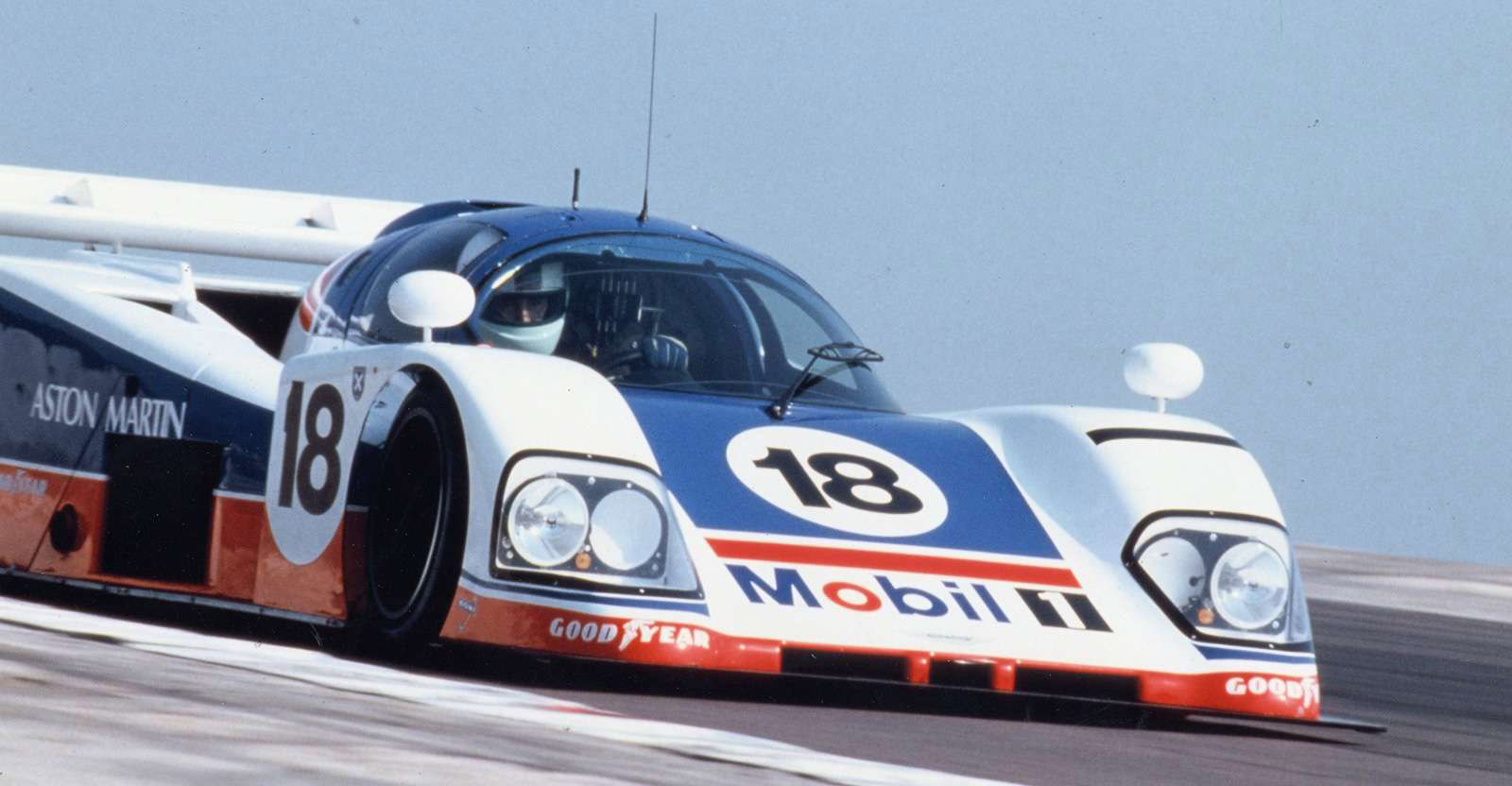
Photo Credits: Top graphic by Sam Woolley, other images sourced from Getty Images, Saleen, the Saleen Owners and Enthusiasts Club, Fox News via 11reynard11 on YouTube, RML, and Aston Martin
Click here to participate in the discussion.
[Source: Jalopnik]
Auto Guangzhou 2015
The 13th China (Guangzhou) International Auto Parts & Accessories Exhibition
Concurrently held with The 13th China (Guangzhou) International Automobile Exhibition (China Import & Export Fair Pazhou Complex (Zone B), Nov. 21-29,2015) and Guangzhou International Electric Vehicle Show (China Import & Export Fair Pazhou Complex (Zone A), Nov. 20-23, 2015), 2015 Guangzhou International Auto Parts & Accessories Exhibition, which platform for both aftermarket and OE Business is to be staged at China Import and Export Fair Pazhou Complex, Guangzhou (zone B), China on Nov. 20-22, 2015.
Since 2012, the Accessories Section & Auto parts of Auto Guangzhou have been upgraded as a specialized concurrent expo. The auto parts and accessories halls are going to be held at different halls of the vehicles sections during Auto Guangzhou 2015.
Click here to participate in the discussion.
[Source: Saleen Motors International]
2005 SALEEN S7
Lot #35792195 Details
Doc Type: MI-CERTIFICATE OF TITLE
Odometer: 2,223 mi. (ACTUAL)
Highlights: Run and Drive, CrashedToys
Primary Damage: ALL OVER
Secondary Damage:
Est. Retail Value: $537,898 USD
Repair Est: $369,814 USD
VIN: 1S9SB18135S000048
Body Style:
Color: SILVER
Engine Type:
Drive:
Cylinder:
Fuel:
Keys: YES
http://www.copart.com/
Notes:
2005 Saleen S7 Twin Turbo with 2,223 miles being sold on a Clean Title, located in Detroit Michigan. The S7 is powered by a twin turbo 750HP 7.0L V8 with a 6-speed manual transmission. According to the insurance company this S7 has been upgraded with the 850HP kit along with the cooling and breather kits. When we received the vehicle the coolant level was very low, we added coolant and were able to start the engine and engage the transmission. This is an insurance company vehicle that was involved in a collision. The front and rear bumpers, headlights, left side door, left and right fenders, spoiler, both quarter panels, deck lid, left side lower air intake and the carbon fiber under carriage sections are broken. The driver side door still opens and closes fine, the gas strut is broken, the front trunk release is broken will not open. The center section of the chassis is scraped along with the cooling lines, oil cooler, oil pan and one of the blow off valves. The right rear wheel is bent and the left rear tire is flat. The vehicle was inspected on a lift, the chassis (center body tub is scraped) suspension, engine (oil pan is scraped) and transmission appear to be straight and undamaged. This vehicle is located in Detroit Michigan yard #61 and will need to be picked up at that location. Buyer is subject to all Michigan licensing and eligibility requirements. CRASHEDTOYS Buyer Fees apply. Please review CRASHEDTOYS Terms and Conditions for Buyer Fee Schedule.
Location: MN – CRASHEDTOYS EAST BET…
Inspection Services
Sale Date: Tue. Jan 12, 2016, 3:00 PM EST
Click here to participate in the discussion.
From our friends at Men and Motors.
Published on Jun 19, 2013
Steve Parker is in California checks out American Muscle Cars, namely the Saleen Mustang.
Click here to participate in the discussion.
[Source: Men and Motors via YouTube]
From our friend Andrew Boring.
Published on Dec 5, 2015
1988 Saleen SporTruck Competition version driven by Steve Saleen around Barber Motorsports Park during the 2015 SCOA Nationals.
[Source: Andrew Boring]